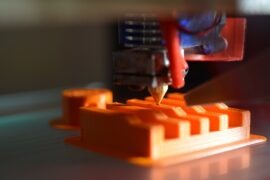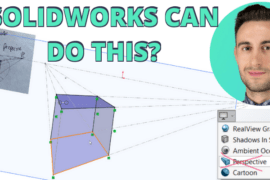
Barra minn hekk, għandna immaġini b'ħafna "hawnhekk kif tmur tagħmel dan", xi SolidWorks importanti u riżorsi ġenerali tal-wiċċ, flimkien ma 'verżjoni tal-mudell iPhone magħmul minn ħadd ħlief Mark Biasotti ta' SolidWorks. Jittieħed eċċitanti naħseb.
il original post on the SolidWorks iPhone model was kind of a crap approach to creating a rough surface model for iPhone accessories and such, but that’s just not gonna do for an actual production model of the phone itself. You’ll need smoother surfaces and a few more steps to get a completely continuous curvature on the shiny back of that fancy phone.
Pass pass
download
Here’s the new file download for your viewing pleasure. You should take more than just a meandering stroll through the FeaturManager if you’re learning about surfacing. There’s a lot you can see in the sketches, the surface feature settings and the reference geometry used as guides that go into making the surfaces of this part smooth.

The images below take you through the main steps, but really, you’ll need to download the model and roll back through the process and settings to see eżattament how to set everything up. However, (one of) the basic process you’ll follow goes something a little like this. (Click to Enlarge and step through each image.)
- Create guide sketches of the main profiles

- Create splines based off the guide sketches

- Sweep the Main Profile

- Trim that sucker

- Set up some Boundary Conditions

- Create a Loft (or Boundary Surface)

- Sweep the Edge

- Mirror the surfaces

Id-differenza
There’s a drastic difference from the old version and new version of the model. Obviously, the curvature wasn’t considered in the first version. The second version is much more consistent. This show the importance of toggling between Curvature Display mode (Ara, Wiri, Kurvatura) and Zebra Stripes (View, Display, Zebra Stripes). For those starting out, put them on your toolbar to access a bit easier.
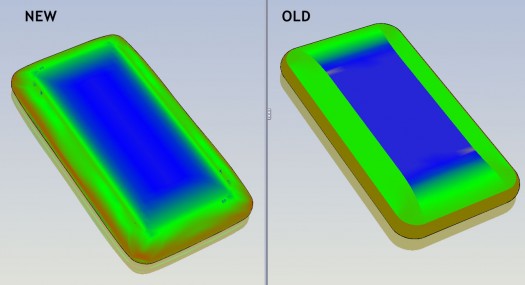
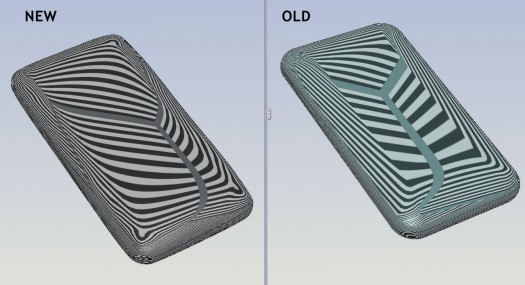
What you’ll realize with surface modeling
You’ll quickly realize, when creating surfaces in SolidWorks (or anything else really), is there many ways to approach a modeling situation, a lot of settings you need to be familiar with, a lot of tweaking of splines and settings and a lot more features than should be necessary to create something as ‘sempliċi‘ as an iPhone. The method above is just one way. You could also try a combination of boundary surfaces and surface fills or you could start off with lofted surfaces. There’s plenty of ways to go about it.
There’s also probably an approach you’re thinking of that may give even better results. If so, let us know down in the comments. More than anything, I want this to provide a way for everyone to learn a little more about how to get great results with surfaces in SolidWorks. Speaking of which, check out the next two sections.
riżorsi
Thanks much in part to the commentators on the last iPhone post, there’s a great amount of resource available for those who want to learn more about surfacing in SolidWorks and surfacing in general.
Sites and Files
How to surface the back of an iPhone 3G – Product Design Forums – great discussion on different solutions with files and additional input from Mark Biasotti and Paul Salvador.
A Periodic Table of Form – Core 77 – Very good resource for learning all about surfacing jargon and why it’s important.
Tricky Modeling Situation – DezignStuff – Matt Lombard takes a look at a similar modeling challenge with great results, plus sample file and good discussion in the comments.
Curvy Stuff – DiMonte Group – Presentation from Ed Eaton of the DiMonte Group with sample files
Know of any? Let me know and I’ll add them to this list. Thanks.
Other things to Note about surfacing in SolidWorks
- Use Splines, not arcs or lines
- Make good use of Equal Curvature and Tangent relations
- If edge is straight, tangent is good enough (thanks Charles)
- Adjust the splines to give you a gradual curve (use curvature combs and polygons)
- Keep adjusting… a little more
- Use symmetry, tangent edges and existing surfaces to your advantage
iPhone 3G model by Mark Biasotti
I’m very thankful to Mark Biasotti for creating a model that shows another great example of how to approach this. We both used a trim approach, but with Mark’s you’ll see just how important proper references can be and how to use Curvature to Face with Boundary Surface to get really smooth results.
download

BIG Thanks
Nixtieq nirringrazzja wkoll Charles Culp for all his input, for taking a look at some different version and giving some tips for better result. Also, much thanks goes out to Matt Lombard għall- SolidWorks Surfacing Bible I referenced several times.

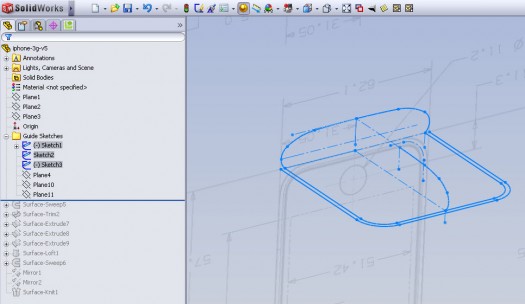
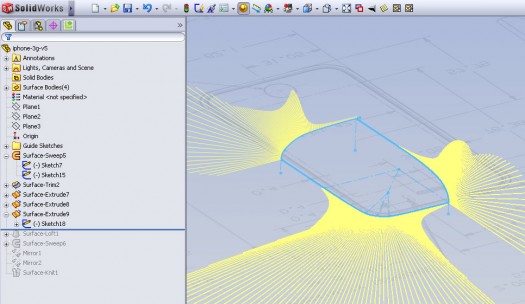
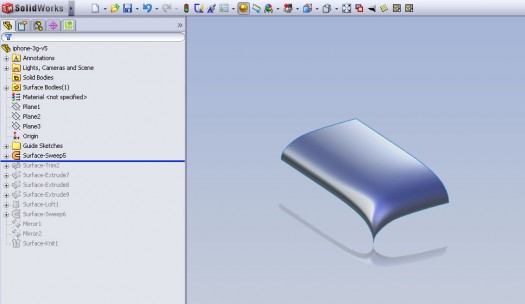
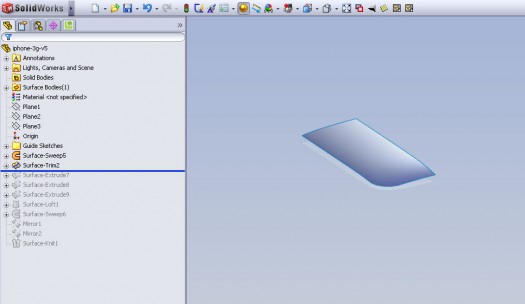
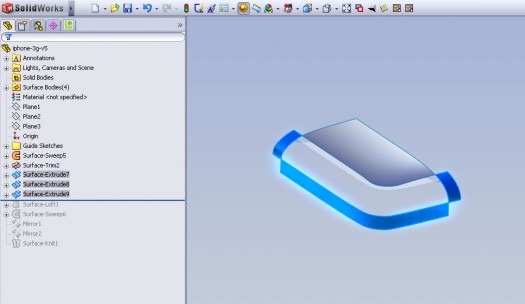
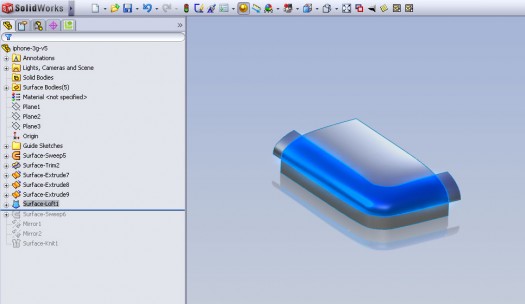
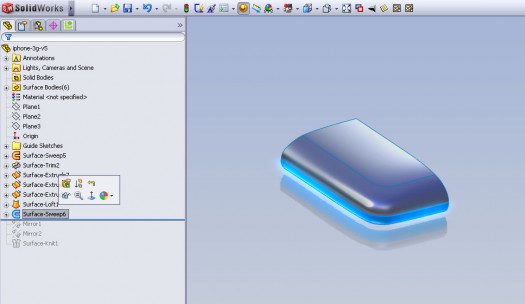
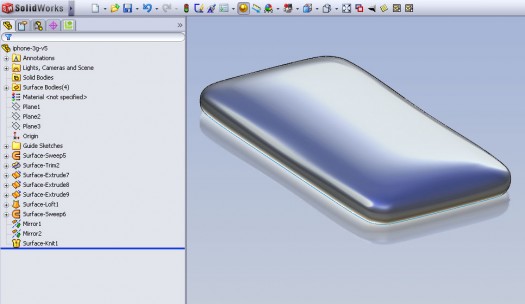
![6 Tipi ta' Tpinġijiet ta' Inġinerija Ċivili [Gwida Dettaljata]](https://www.solidsmack.com/wp-content/uploads/2023/12/Civil-Engineering-Drawings-270x180.jpeg)
